Instruction
Custom Fitting: The most overlooked club in your bag
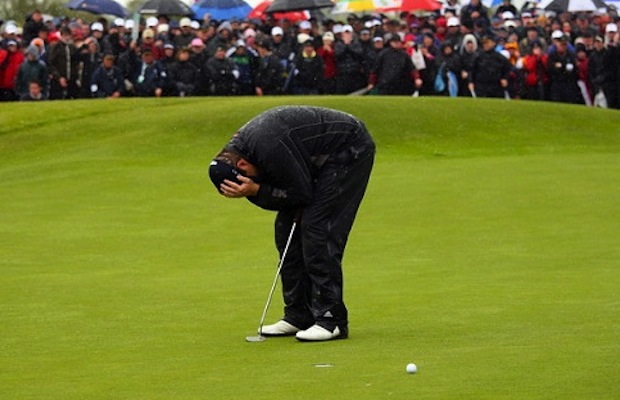
Golfers have learned that custom fit clubs are necessary to lower their scores, but they often neglect a crucial scoring club in the fitting process: the putter.
Last year, I was able to perform close to 50 club fittings in only 6 months. In 2012, I performed enough club fittings to be named a PING “Fitter of the Year.” This shows me that the golf consumer is getting smarter, but there is one issue with how the fittings have worked out. Of those 120+ fittings, not a single player directly asked me to be fit for their putter, which is used more than any other club in the bag.
Golfers tend to head to a retail store and merely pick out the putter that “feels the best” without any basis as to why they want that particular model. Now, that doesn’t mean club fitting for longer clubs carries any less importance. As found in advanced metrics on professional tours, the ability to hit it long off the tee with the driver within a reasonable distance to the fairway is arguably the No. 1 factor to scoring average. So it is very important to have a driver that optimizes distance. However, if driving is “1a” in terms of importance, then putting is most certainly “1b.”
If you are looking to get better, but you don’t have the time to work with a personal trainer to build your speed and power or a swing coach to give you the perfect swing plane, putting is the next solution to lowering your scores.
The No. 1 issue with golfers who come to me for a short game lesson is that they feel their putting stroke is off. However, the putter they use is usually more off. For a decent putter, this leads to inconsistent days on the greens, and it can lead to less-skilled putters developing bad habits.
The putter is a club that you usually only have to fit once, and unless you are a junior golfer who is growing or you develop some sort of physical ailment, you could possibly keep it for the rest of your playing career. At our facility at Deerpath Golf Course in Lake Forest, Ill., I tell students that the $75 they spend on a putting evaluation could save them thousands of dollars in putter trial and error.
With the use of SAM Puttlab and high-speed video, these are the areas that I look for when fitting a putter and the effects that each could have on the stroke.
No. 1: Length and Lie Angle
The length of the putter has a tremendous impact on the shape of your stroke. The putter is meant to swing on the inclined plane on which the shaft rests. If the length of the putter is longer, the putter will need to arc more around your body, while a shorter putter can travel a bit more “straight back and straight through.”
A putter that is not the right length will affect the path of the stroke, which can have an influence on making consistent contact and controlling the rotation of the putter face. The lie angle has an effect on the ability to hit the center of the putter. At the speeds we swing the putter, there may not be enough force to send a ball off line from an off-center hit, but it will have an effect on distance control.
Throughout this article, I will reference measurements and results from the putting stroke of a sample student with his original putter, which was center-shafted and face-balanced. After a putting fitting, I then took his measurements with a properly-fit heel-shafted, toe-balanced putter, and I will also reference those results as well.
The original putter lie was incorrect and lead to toe contact.
After the switch, contact started to move toward the center of the putter face. There are a few inconsistencies in the contact, which can be improved with drills.
No. 2: Head Type/Shaft Hosel Design
Aiming is the most important aspect to putting and the putter you select has a big effect on how well you aim at the target. It is very common to see even a tour-caliber player have issues aiming the putter directly at their target.
It can be argued that it is more important to be consistent with where you aim the putter and work with that, but if you truly do not want to compensate in your putting stroke, aiming the putter at the target is the first step. The head design has a huge effect on this.
My student aimed his center-shafted, face-balanced putter 1.3 degrees closed, and although he was very consistent, he had to manipulate his putter during his stroke to get the putter face “square” at impact. The other thing to note was that the putter was set up on the toe, which was consistent with the impact point. This was the No. 1 factor that determined a switch from a center-shafted putter to a heel-shafted putter was needed. The results were a much improved aim with a similar level of consistency shown below.
The putter head design can have a huge effect on how much the putter face rotates throughout the stroke, as well as an effect on the resulting path. With his original putter, my student had the path and face rotation results shown below.
My student switched to a center-shafted, face-balanced putter because he felt he had “too much arc” in his stroke, and center-shafted, face-balanced putters are known to create a more straight-back, straight-through path. While he thought his stroke was more linear, its arc was actually traveling to the left, or out-to-in. A more pressing issue was the inconsistency of his backstroke, however, which is represented by the dotted line above.
The result of my student’s original path and his initial aim was that he opened the putter during the backstroke and then “held off” the rotation of the putter face on the way through in an attempt to keep the putter face square. He was surprisingly consistent, but we saw how difficult it was for him to find the center of the putter face making these compensations.
Below are the results from the properly-fit putter:
When the student switched to a properly fit putter, the path became more neutral. His stroke also changed from outside-in to having just a little bit of arc, which got him closer to his goal of having a straight-back, straight-through stroke.
With a properly fit putter, the putter head rotated more freely and he was able to release it through the stroke. There is still work to do, because the putter was still about 2 degrees open at impact after the change, but it is an improvement from 2.9 degrees open with the old putter that effectively had him “cutting” his putts.
No. 3: Loft
Loft is an aspect of putter fitting that depends on the golf courses you typically play. It’s needed on a putter because when the golf ball rests on a green, it settles down into the grass ever so slightly. This means that we need to launch the golf ball into the air a little bit so it can get on the grass and start rolling as fast as possible. This has a huge influence on speed and distance control in putts.
There are a few factors to look at including what your green speeds typically are at your home course. The slower the green, the more loft you need on the putter. If you are putting at Augusta National, maybe you can get away with only 1 degree of loft on your putter, but at your home course with a green speed of 8, you may need 3-to-4 or more degrees of loft.
The other factor is the hand position and the amount of “delofting” a golfer does through impact. For example, on a green speed of 11, we would like the golf ball to launch at approximately 2 degrees. This could be achieved with a 3-degree putter that has 1 degree of deloft at impact and a neutral rise angle.
If you are a putter like Matt Kuchar, however, who has a serious putter deloft through impact and a level rise angle through impact, then you may need 5, 6 or even 7 degrees of loft on your putter.
A putter like Zach Johnson, who has his hands positioned behind the ball at address and through the stroke, can use less loft on his putter to achieve a desired launch angle.
After getting fit for a new putter, my student had a slight improvement in rise-angle-to-loft and his putts were launching with less backspin. For most part, the launch angle of 4 degrees up stayed the same.
No. 4: Grip
The grip on a putter works just like a golf club. If you have a putter that does not allow the putter to rotate square to the path of the club, then adjusting the grip can help this problem along with putter head design.
If you are player with too little face rotation, then a smaller grip size can help you release the putter head. A larger putter grip can help minimize face rotation or even help take the hands out of the stroke for golfers who struggle to keep their hands steady. These are considerations that can be looked at from the rotational diagrams we saw above.
Conclusion
As established in the categories above, there is a lot that goes into picking the right putter, and quite frankly, an off-the-rack putter is probably not the best one for you. If you take the time to get fit for a putter, it can save you money down the road and some closet space.
There were numerous areas that I could have worked on with my student with his old putter, and we could have spent hours trying to fix his flaws. Through one 60-minute session and a new putter, however, we were able to improve several areas in far less time and with far less effort. Fewer dollars spent and fewer strokes taken is always a good combination.
Do yourself a favor and go through a putter fitting!
- LIKE15
- LEGIT7
- WOW0
- LOL0
- IDHT0
- FLOP0
- OB0
- SHANK0
Instruction
The Wedge Guy: The easiest-to-learn golf basic

My golf learning began with this simple fact – if you don’t have a fundamentally sound hold on the golf club, it is practically impossible for your body to execute a fundamentally sound golf swing. I’m still a big believer that the golf swing is much easier to execute if you begin with the proper hold on the club.
As you might imagine, I come into contact with hundreds of golfers of all skill levels. And it is very rare to see a good player with a bad hold on the golf club. There are some exceptions, for sure, but they are very few and very far between, and they typically have beat so many balls with their poor grip that they’ve found a way to work around it.
The reality of biophysics is that the body moves only in certain ways – and the particulars of the way you hold the golf club can totally prevent a sound swing motion that allows the club to release properly through the impact zone. The wonderful thing is that anyone can learn how to put a fundamentally sound hold on the golf club, and you can practice it anywhere your hands are not otherwise engaged, like watching TV or just sitting and relaxing.
Whether you prefer an overlap, interlock or full-finger (not baseball!) grip on the club, the same fundamentals apply. Here are the major grip faults I see most often, in the order of the frequency:
Mis-aligned hands
By this I mean that the palms of the two hands are not parallel to each other. Too many golfers have a weak left hand and strong right, or vice versa. The easiest way to learn how to hold the club with your palms aligned properly is to grip a plain wooden ruler or yardstick. It forces the hands to align properly and shows you how that feels. If you grip and re-grip a yardstick several times, then grip a club, you’ll see that the learning curve is almost immediate.
The position of the grip in the upper/left hand
I also observe many golfers who have the butt of the grip too far into the heel pad of the upper hand (the left hand for right-handed players). It’s amazing how much easier it is to release the club through the ball if even 1/4-1/2″ of the butt is beyond the left heel pad. Try this yourself to see what I mean. Swing the club freely with just your left hand and notice the difference in its release from when you hold it at the end of the grip, versus gripping down even a half inch.
To help you really understand how this works, go to the range and hit shots with your five-iron gripped down a full inch to make the club the same length as your seven-iron. You will probably see an amazing shot shape difference, and likely not see as much distance loss as you would expect.
Too much lower (right) hand on the club
It seems like almost all golfers of 8-10 handicap or higher have the club too far into the palm of the lower hand, because that feels “good” if you are trying to control the path of the clubhead to the ball. But the golf swing is not an effort to hit at the ball – it is a swing of the club. The proper hold on the club has the grip underneath the pad at the base of the fingers. This will likely feel “weak” to you — like you cannot control the club like that. EXACTLY. You should not be trying to control the club with your lower/master hand.
Gripping too tightly
Nearly all golfers hold the club too tightly, which tenses up the forearms and prevents a proper release of the club through impact. In order for the club to move back and through properly, you must feel that the club is controlled by the last three fingers of the upper hand, and the middle two fingers of the lower hand. If you engage your thumbs and forefingers in “holding” the club, the result will almost always be a grip that is too tight. Try this for yourself. Hold the club in your upper hand only, and squeeze firmly with just the last three fingers, with the forefinger and thumb off the club entirely. You have good control, but your forearms are not tense. Then begin to squeeze down with your thumb and forefinger and observe the tensing of the entire forearm. This is the way we are made, so the key to preventing tenseness in the arms is to hold the club very lightly with the “pinchers” — the thumbs and forefingers.
So, those are what I believe are the four fundamentals of a good grip. Anyone can learn them in their home or office very quickly. There is no easier way to improve your ball striking consistency and add distance than giving more attention to the way you hold the golf club.
More from the Wedge Guy
- The Wedge Guy: Golf mastery begins with your wedge game
- The Wedge Guy: Why golf is 20 times harder than brain surgery
- The Wedge Guy: Musings on the golf ball rollback
- LIKE86
- LEGIT13
- WOW6
- LOL1
- IDHT0
- FLOP4
- OB1
- SHANK8
Instruction
Clement: Stop ripping off your swing with this drill!

Not the dreaded headcover under the armpit drill! As if your body is defective and can’t function by itself! Have you seen how incredible the human machine is with all the incredible feats of agility all kinds of athletes are accomplishing? You think your body is so defective (the good Lord is laughing his head off at you) that it needs a headcover tucked under the armpit so you can swing like T-Rex?
- LIKE0
- LEGIT2
- WOW2
- LOL0
- IDHT0
- FLOP0
- OB0
- SHANK2
Instruction
How a towel can fix your golf swing

This is a classic drill that has been used for decades. However, the world of marketed training aids has grown so much during that time that this simple practice has been virtually forgotten. Because why teach people how to play golf using everyday items when you can create and sell a product that reinforces the same thing? Nevertheless, I am here to give you helpful advice without running to the nearest Edwin Watts or adding something to your Amazon cart.
For the “scoring clubs,” having a solid connection between the arms and body during the swing, especially through impact, is paramount to creating long-lasting consistency. And keeping that connection throughout the swing helps rotate the shoulders more to generate more power to help you hit it farther. So, how does this drill work, and what will your game benefit from it? Well, let’s get into it.
Setup
You can use this for basic chip shots up to complete swings. I use this with every club in my bag, up to a 9 or 8-iron. It’s natural to create incrementally more separation between the arms and body as you progress up the set. So doing this with a high iron or a wood is not recommended.
While you set up to hit a ball, simply tuck the towel underneath both armpits. The length of the towel will determine how tight it will be across your chest but don’t make it so loose that it gets in the way of your vision. After both sides are tucked, make some focused swings, keeping both arms firmly connected to the body during the backswing and follow through. (Note: It’s normal to lose connection on your lead arm during your finishing pose.) When you’re ready, put a ball in the way of those swings and get to work.

Get a Better Shoulder Turn
Many of us struggle to have proper shoulder rotation in our golf swing, especially during long layoffs. Making a swing that is all arms and no shoulders is a surefire way to have less control with wedges and less distance with full swings. Notice how I can get in a similar-looking position in both 60° wedge photos. However, one is weak and uncontrollable, while the other is strong and connected. One allows me to use my larger muscles to create my swing, and one doesn’t. The follow-through is another critical point where having a good connection, as well as solid shoulder rotation, is a must. This drill is great for those who tend to have a “chicken wing” form in their lead arm, which happens when it becomes separated from the body through impact.
In full swings, getting your shoulders to rotate in your golf swing is a great way to reinforce proper weight distribution. If your swing is all arms, it’s much harder to get your weight to naturally shift to the inside part of your trail foot in the backswing. Sure, you could make the mistake of “sliding” to get weight on your back foot, but that doesn’t fix the issue. You must turn into your trial leg to generate power. Additionally, look at the difference in separation between my hands and my head in the 8-iron examples. The green picture has more separation and has my hands lower. This will help me lessen my angle of attack and make it easier to hit the inside part of the golf ball, rather than the over-the-top move that the other picture produces.


Stay Better Connected in the Backswing
When you don’t keep everything in your upper body working as one, getting to a good spot at the top of your swing is very hard to do. It would take impeccable timing along with great hand-eye coordination to hit quality shots with any sort of regularity if the arms are working separately from the body.
Notice in the red pictures of both my 60-degree wedge and 8-iron how high my hands are and the fact you can clearly see my shoulder through the gap in my arms. That has happened because the right arm, just above my elbow, has become totally disconnected from my body. That separation causes me to lift my hands as well as lose some of the extension in my left arm. This has been corrected in the green pictures by using this drill to reinforce that connection. It will also make you focus on keeping the lead arm close to your body as well. Because the moment either one loses that relationship, the towel falls.


Conclusion
I have been diligent this year in finding a few drills that target some of the issues that plague my golf game; either by simply forgetting fundamental things or by coming to terms with the faults that have bitten me my whole career. I have found that having a few drills to fall back on to reinforce certain feelings helps me find my game a little easier, and the “towel drill” is most definitely one of them.
- LIKE12
- LEGIT2
- WOW2
- LOL0
- IDHT0
- FLOP2
- OB0
- SHANK8
-

 19th Hole2 weeks ago
19th Hole2 weeks agoDave Portnoy places monstrous outright bet for the 2024 Masters
-

 19th Hole2 weeks ago
19th Hole2 weeks agoTiger Woods arrives at 2024 Masters equipped with a putter that may surprise you
-

 19th Hole18 hours ago
19th Hole18 hours ago‘Absolutely crazy’ – Major champ lays into Patrick Cantlay over his decision on final hole of RBC Heritage
-

 19th Hole3 weeks ago
19th Hole3 weeks agoReport: Tiger Woods has ‘eliminated sex’ in preparation for the 2024 Masters
-

 19th Hole1 week ago
19th Hole1 week agoTwo star names reportedly blanked Jon Rahm all week at the Masters
-

 19th Hole7 days ago
19th Hole7 days agoReport: LIV Golf identifies latest star name they hope to sign to breakaway tour
-

 19th Hole1 week ago
19th Hole1 week agoNeal Shipley presser ends in awkward fashion after reporter claims Tiger handed him note on 8th fairway
-

 19th Hole6 days ago
19th Hole6 days agoBrandel Chamblee has ‘no doubt’ who started the McIlroy/LIV rumor and why

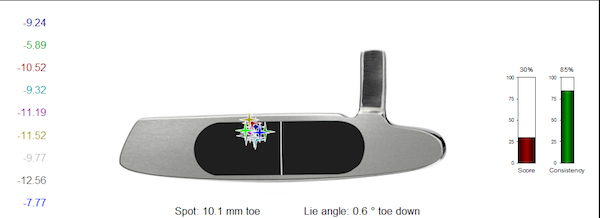
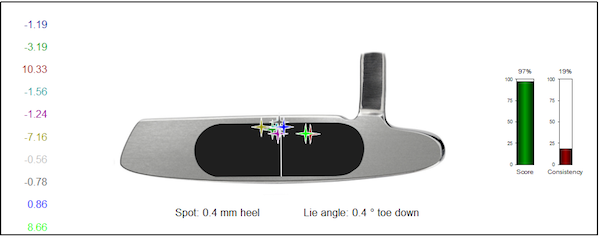
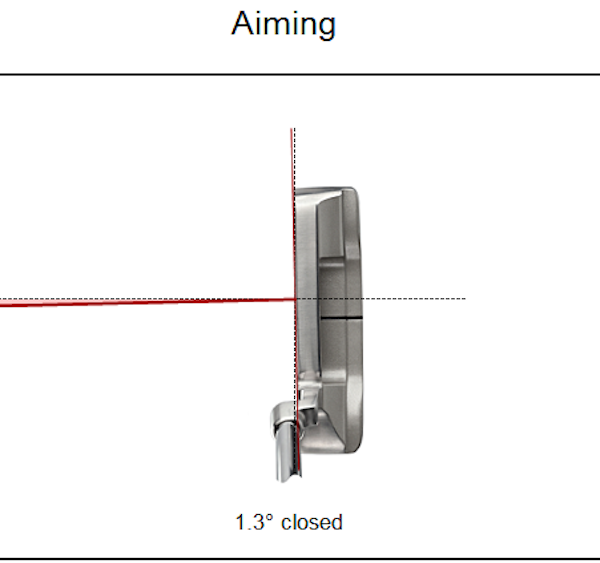
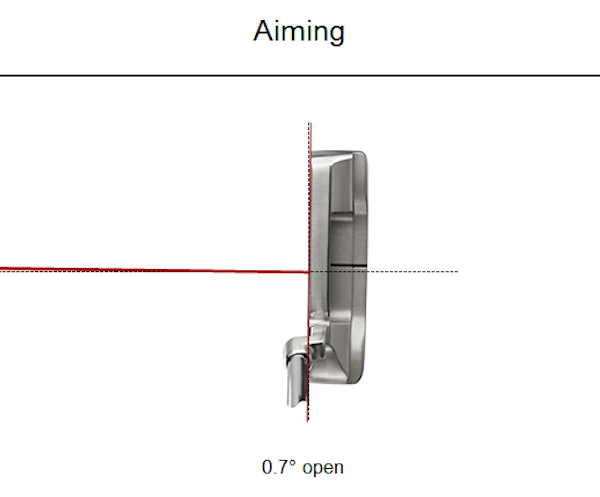
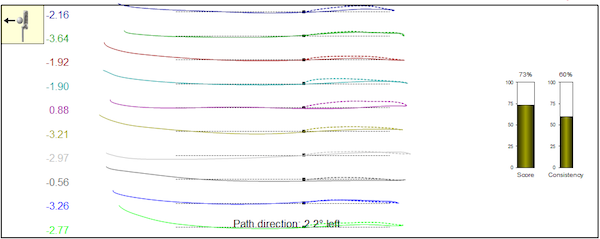
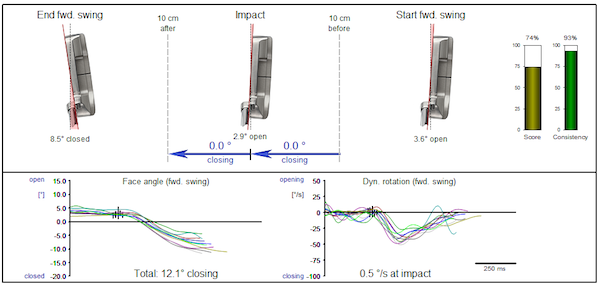
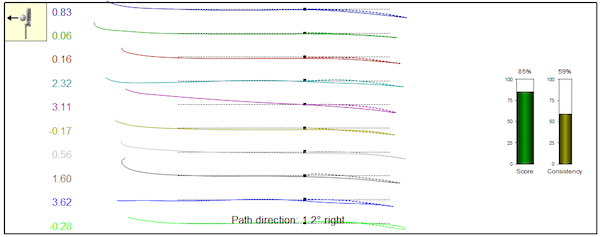
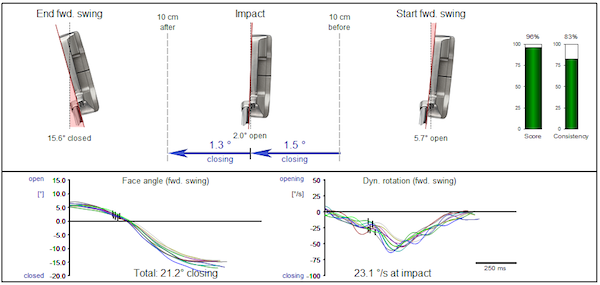
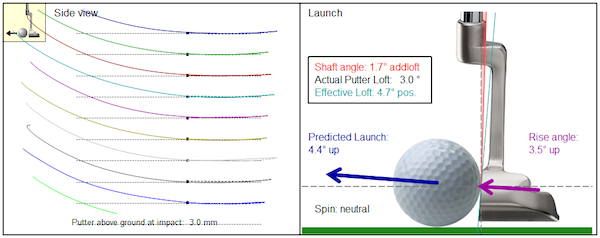






















Rick Wright
Jul 1, 2014 at 12:31 pm
As the developer of the first comprehensive putter fitting system in golf back in 1996, I can speak from experience. A properly fit putter can certainly compliment putting performance. However, putter fitting is best done only as a part of instruction. Otherwise, you may only be treating symptoms.
Tim Tomlinson
Jul 1, 2014 at 11:55 am
Great article Scott! I completely agree with you as most golfers do not take the time to get fitted for a putter. I am a sales rep for SAM PuttLab so if anybody would like any additional information on the SAM PuttLab please let me know. Thanks and keep up the good work!
[email protected]
CS
Jun 29, 2014 at 2:23 am
The problem is going to get worse…….. if we have all this information now, why do John Q Public amateurs need to pay you PGA professionals your high fees? The clients can go now to non-PGA golf fitting shops and get the same info from guys that don’t charge $150 to $300 an hour. Or just use the web like this and use common sense.
Tom
Jun 29, 2014 at 12:59 am
I work as a custom fitter and most people (95%) who want to be fitted for a putter can’t break 90 anyway. Learn how to putt and come back and talk to me. I am not paid to give lessons. Golfers are just an asinine group of people, at times. Learn the fundamentals and read The Art of Putting by Dr. Bob Rotella and their game would improve immensely. The putter is not to blame when you cannot putt!
Mike Mullins
Jul 11, 2014 at 9:51 am
As the article discusses, I think it is very important to have every club fitted as I just had my putter fitted by someone who took the time to understand me and my stroke, explained my tendencies, and recommended a couple of things which help me improve.
I’m glad I didn’t run into you and your attitude about “asinine” golfers. because if you didn’t have them coming in to where you work, you’d be selling worms at a Bait shop.
Pingback: Custom Fitting: The most overlooked club in your bag | Spacetimeandi.com
Tom Stickney
Jun 27, 2014 at 10:23 pm
See scienceandmotion.com for a listing of teachers with the Sam Puttlab. It’s an amazing tool; I love mine.
Adam B.
Jun 28, 2014 at 4:45 pm
Tom,
Do most instructors that have SAM Puttlab use it to improve the way people putt with their current putter or use it to test a variety of putters? In other words, would it be able to tell me what kind of putter I need based on my current putter?
Tom Stickney
Jun 29, 2014 at 9:48 am
Adam. It can compare putters and help you also see which head design best matches your stroke.
William Ramsey
Jun 27, 2014 at 4:45 pm
I think this is really cool. Is there a way to find club fitters with this kind of knowledge/technology/ability?
Merty Huckle
Jun 27, 2014 at 1:55 pm
Great write up!
Dan P
Jun 27, 2014 at 1:29 pm
Getting custom fit on a SAM Puttlab was the best decision I made this season. I had an off the rack Nike Method 001 and had struggled with distance control for years. Turns out the putter had 0* of loft, a quick session on the SAM Puttlab and a quick bend in loft and I was on my way. The ball rolls so much truer than it used to.